Renowned for his wonderful children’s series, Zita the Space Girl and last year’s Julia’s House for Lost Creatures, Ben Hatke is one of the leading talents in young person’s graphic literature. His latest effort, Little Robot, which releases in stores today, tells the tale of a young girl who discovers a robot in the woods. […]
Viewing: Blog Posts Tagged with: kids comics, Most Recent at Top [Help]
Results 1 - 7 of 7
Blog: PW -The Beat (Login to Add to MyJacketFlap)
JacketFlap tags: Interviews, Cartoonists, First Second, kids comics, Ben Hatke, Top News, Little Robot, Add a tag
Blog: E is for Erik (Login to Add to MyJacketFlap)
JacketFlap tags: Summer Reading, kids comics, Harts Pass, Add a tag
Another great comic courtesy of 5th grade guest cartoonist, Stella Gitchos. Looking forward to more comic creativity at both this week's Methow Valley Elementary Young Writer's Conference and throughout the summer in my North Central Regional Library summer reading visits. Write on!
Blog: E is for Erik (Login to Add to MyJacketFlap)
JacketFlap tags: school visits, kids comics, Harts Pass, Add a tag
Between finishing my next recent book and coaching at the State Track meet, I'm a little late in posting this week's comic. Lucky for me, it's guest cartoonist week here at Harts Pass :) After a recent Methow Arts residency at the local elementary school, I've put a few kids on the payroll for both this week and next. Kinda like Family Circus... except these kids are the real deal! Much thanks to Isaac Carlsen for this week's excellent unicorn strip.
Blog: PW -The Beat (Login to Add to MyJacketFlap)
JacketFlap tags: Comics, Conventions, Kaboom, Boom Studios, Wondercon, All-ages, kids comics, Top News, push fun forward, Wondercon'15, Add a tag
Lately the words “All-Ages” have become a buzz phrase without a clear definition. Some publishers use it to brand their comics for kids, while others have geared it towards a polarizing audience outside of anything branded “Mature”. BOOM! associate editor Whitney Leopard has recently led discussions at various cons about the importance of all-ages comics. Sunday at Wondercon the latest informative session was held; among her group for this particular one was Derek Fridolfs (Lil Gotham), Shelli Paroline (Adventure Time), Mairghread Scott (Transformers), and Melissa Paglucia (Above The Clouds).
After a rundown of the groups first experiences as comic fans (ranging from Bone, Star Wars, and even Manga), the panel delved into the meaning of what all-ages books should be. These topics are something all comics fans that want to see the industry thrive and be around for future generations to read should be talking about. Today’s market caters towards older readers (age 18-49). Places like Boom! and IDW, who are publishing a fair amount of inclusive comics, are still too rare of an occurrence. Fridolfs talked about how children’s bookstores are carrying graphic novels and how they demonstrate how important that audience will be once the older generation phases out. When you think about it, regular Batman books aren’t even for kids. Children who’ve only heard about the Nolan movies don’t always get to see them cause some parents might not feel like it’s appropriate for their kids, but every child has heard of the character and might want to see it in whatever form they’re allowed.
Typically words like “silly and fun” are associated with all-ages, but can there be heavier stories in this genre? One of the points made by the group is how polarizing this type of book is suppose to be. Even though books like these should be inclusive for kids; if the heavy stuff is handled responsibly then the story is even more valuable for that piece of its intended audience. Editors are around to decide if you’ve gone to far or not far enough as a storyteller. Paglucia gave the example about how David Peterson’s Mouse Guard nails an all-ages aspect by how immersive the world is for kids to look at while teaching them about real issues in life they’ll have to encounter.
Another stereotype of all-ages books is there association with licensed properties such as Adventure Time, My Little Pony, Skylanders, etc. Is there room for original material in the world of all-ages? While the group believes there is a market for it; licensed properties have a “joy” according to Scott. One of their latent effects is the ability of the books to sort of trick kids into reading. In today’s –YouTube let’s play– world most young children have dismissed the pleasures of reading, but they’d be open to reading a comic about their favorite licensed property and that could be a gateway into reading other things.
According to the group another challenge in pushing all-ages comics lies with the retailers. Every shop is different and some merchandise smarter than others. Some shops separate them out from the rest of their catalogue, while others hide them in the back. According to Leopard, smarter shopkeepers make sure they’re featured and within reach of the audience they’re intended for. One problem that still puzzles creators who want to do all-ages books is the trepidations shown by publishers. Scott’s first issue of Guardians of the Galxy animated sold out in stores to everyone’s surprise but her’s. Most major publishers spend much of their time enticing older readers that they find themselves afraid of alienating them by making comics geared towards younger audiences. “I’m surprised it took DC years to grasp the idea that little kids like Batman,” according to Scott.
As for the future of all-ages comics, Fridolfs feels small companies are picking up the slack of the bigger publishers, but keeping the books accessible is paramount. In addition to making them easy to find, it also means keeping the stories short and always welcoming to new readers. Scott would like the medium to expand beyond the boundaries of the page, making them have a level of activity or immersion that lets people play with the story. Even if imploding Transformer cupcakes would never be done in the book, kids should be able to express that idea somewhere if they really like the characters. Paroline wants to see more educational comics and long form stories such as the coming of age nature of a Harry Potter type story. Paglucia had ideas for shops to be more inviting for younger readers by having rewards programs such as “tell us what you like” and “read so many and you’ll get a free one”.
When the subject of recommendations for books came up; the mix was eclectic ranging from Gotham Academy to Reed Gunther. In a way Gotham Academy is a true all-ages book even though it isn’t marketed that way.
The panel was a great subject for comics fans. By no means is all-ages a new concept. When you think about it, the medium itself began as all-ages. Superhero comics were intended for kids but military soldiers in war time were reading them on the front lines in WWII and back then the books were always geared towards attracting new and young readers. As an industry, comics should return to that aim. Once the industry figures out how to really once again say comics are for everyone, they can start saying comics go beyond all-ages to all-races and all-sexual orientations.
I hope this panel appears at every show. If you’re a fan that wants to voice your opinion on the future health of comics publishing, it’s an opportunity to engage with one of the most responsible gatekeepers in the industry.
Blog: PW -The Beat (Login to Add to MyJacketFlap)
JacketFlap tags: Archie, Smile, My Little Pony, kids comics, Top News, Add a tag
By Matt O’Keefe
For years there’s been the complaint that comics aren’t for kids anymore. I say that comic shops aren’t (necessarily) for kids anymore. While a lot of what you find in your LCS isn’t geared towards children, there are still a number of avenues where all-ages comics can gain traction. Here are nine of them.
1. The Direct Market
Even though most kids haven’t stepped foot into a comic shop, they’re still a big way that comics get into their hands. The best comic book evangelists for children are undoubtedly their parents, the ones paying for their entertainment in the first place. Parents who are comics fans themselves have every incentive to get their children invested in the hobby, which is probably why Tiny Titans, a comic that was popular with readers of all ages, was able to last 50 issues, longer than the majority of kids comics fare.
2. The Supermarket
As much success as Archie Comics has had lately in periodicals, the bulk of its sales still come from the digests people find in the checkout line. Comichron reported that Archie sold well over 2 million digests in 2013. That’s no small number, especially in an industry where the #1 book of the month generally tops out at around 150,000 copies.
3. Toy Stores
Stores that sell toys have recently become opportunities to sell kids comics. IDW has made great strides by offering mini comics as micro-fun packs. A fan of My Little Pony at the right Toys R’ Us, Target or Walmart has an extra chance to be exposed to comics. Because of the success from that brand, IDW even expanded to offering TMNT micro-fun packs in January.
4. The Web
Webcomics are a pretty obvious way for kids to be exposed to the medium, only requiring an internet connection as opposed to a car ride to the LCS. While it’s been notoriously hard for creators to make money off of webcomics, things are starting to turn around. Patreon is gaining traction as a way for creators to receive a regular income (The Beat has one!) and kids comics have the kinds of advocators who would be likely to consider pledging. Kids are also perhaps more likely to be excited by memorabilia (such as t-shirts) that serves as supplemental income for webcomic creators.
5. Kickstarter
Kickstarter and other crowdfunding sites are accessible ways for creators to sell their comics to kids. Kickstarter and company have built up a large following that’s regularly browsing campaigns they might want to support. Kids probably aren’t browsing Kickstarter, but through the crowdfunder the parents who make the purchasing decisions are given an extra chance to be exposed to comics. It’s been shown that Kickstarters for comics find more success when the comics have had exposure elsewhere. To cite previous successes, Aw Yeah Comics benefited from Art Baltazar and Franco’s audience in the direct market, and Lilith Dark was previously a popular webcomic.
6. Bookstores
Major children’s book publisher Scholastic’s GRAPHIX imprint is opening the doors to all-ages comics by releasing critically-acclaimed books such as BONE, Amulet, Smile, and Missile Mouse. Imprints like GRAPHIX are near-impossible to break into, but those who do get a book published by them reap a lot of rewards.
7. Book Conventions
The American Library Association just opened up a spot for an Artist Alley in 2013, so the market is still ripe for conventions that are mostly attended by librarians and book fans. Libraries are often an afterthought in the comic book industry, but librarians are always looking for new stories that will reach kids. Chris Giarruso, the cartoonist behind G-Man and Mini Marvels, said on the Kids Comics Revolution podcast that the ALA Convention was his most important show of the year.
8. School and Library Visits
These are hit and miss, but when they hit they really hit. Raina Telgemeier, the writer/artist of Smile, reported on Gregg Schiegel’s podcast Stuff Said that she’s found a lot of success with such events. Not all visits are gearing towards selling books but, even if creators aren’t making extra revenue off sold copies, they’re steering kids towards the comics medium.
9. Activism
This isn’t necessarily a new outlet to sell comics, but it’s a recently emerging way to gain attention. Maybe the newest form of kids comics marketing that that’s striking a cord with both comic book readers and nonreaders is activism. Comics or graphic novels that raise awareness about certain issues have recently found some success. The Kickstarter for Metaphase, a comic about an invulnerable hero who has a son with Down syndrome, raised almost $10,000. In addition, the Indiegogo-funded The Zipper Club is offering a scholarship to attend a camp for kids with heart defects similar to the one attended by characters in the graphic novel, a particularly clever way to promote kids comics through activism. It demonstrates that there will continue to be new ways to get comics exposed to children.
If you don’t believe comics are for kids anymore, here is a counter to that, showing some of ways they’re still reaching them. This isn’t an article about how to get them into those outlets; that would be a whole series of posts. But, if you’re a creator, maybe this gives you an idea of how or where to sell your all-ages comic. Regardless, it’s nice to think about all the routes that comics still have to reach a younger audience.
Thanks to Michael Lapinski for assisting me with this article.
Blog: RabbleBoy (Login to Add to MyJacketFlap)
JacketFlap tags: graphic novel, book review, comics, Luke Pearson, comic art, Kids comics, Hildafolk, Hilda, Flying Eye Books, Bird Parade, screen shot, Book Reviews, illustration, all ages, Add a tag
Getting used to life in the big city is proving difficult for Hilda. The diminutive explorer is still missing the enchanted valleys and magical friends that surrounded her home in the fjords. But tonight is somehow different; tonight is the night of the mysterious Bird Parade.
Finding herself lost on the streets of Trolberg, Hilda befriends a talking raven. Together they encounter all manner of bizarre creatures from outcast Trolls to ferocious Salt Lions and deadly Rat Kings—maybe the city isn’t so boring after all.
As the pair try to find their way home, it becomes clear that the amnesiac raven has an important mission to attend to . . . if only he could remember what it was.
This beautiful book with its embossed cloth spine and eye-popping spot varnish is sure to delight children and adults across the country.
Luke Pearson, author of Hildafolk, Hilda and the Midnight Giant, and Everything We Miss has fast become one of the leading talents of the United Kingdom comics scene, garnering rave reviews from the prestigious Times and Observer newspapers and winning the Young People’s Comic Award at the 2012 British Comic Awards for Hilda and the Midnight Giant.
If you order this book via this link, you will help support my site. Many thanks! Get it on Amazon: Hilda and the Bird Parade (Hildafolk)
- Age Range: 6 and up
- Grade Level: Kindergarten and up
- Series: Hildafolk
- Hardcover: 44 pages
- Publisher: Flying Eye Books (April 2, 2013)
Add a Comment
Blog: PW -The Beat (Login to Add to MyJacketFlap)
JacketFlap tags: kids comics, All Ages Comics, Top News, The Phoenix, Phoenix Presents, Tom Fickling, Add a tag
Every Friday, Stately Beat Mansion invites round a comic creator or two for a cup of tea, complementary Kit Kat, and a chat about their work in The Phoenix. The Phoenix is a UK series which features a range of the best all-ages comics available, from all kinds of wonderful creators – all compiled into a single issue each week! The Phoenix have very kindly commissioned a wolf with a saddle just for this feature, which journeys across the wilderness over to The Mansion every week with new creators mounted.
This week sees Tom Fickling race on over to tell us about Simon Swift a story appearing in today’s newest issue. If that name sounds familiar, it’s because he’s the other half of the creative team – artist Zak Simmons-Hurn spoke about the series a short while back. If you want to find out more, then try an issue of The Phoenix for yourself!
Steve: What is Simon Swift about?
Tom: The comic is about a boy who has a strange voice he can talk to in his head. The voice belongs to a mysterious being that gives him special powers. But of course, also puts him in great danger! Simon Swift is the star but he has a group of friends who travel with him.
Steve: What inspired the series?
Tom: I love fantasy and Dungeon’s & Dragons and wanted to write a story that had those archetypes in it: Ranger, Mage, Thief, Warrior etc. And I’m also a bit obsessed with the idea of souls and demons and the like. The idea for the voice in Simon’s head probably came from David Gemmell though.
Steve: How is your process with the writing of the story? How do you take your ideas and develop them into awesome comics?
Tom: Zak (the artist) is the one who makes it into an awesome comic. I’m not an experienced comic writer as my background is in screenwriting, so I really rely on him a lot! This is my first comic strip and already I can see a million and one things I have done wrong. Hopefully getting better though!
Steve: What’s your favourite part of this week’s story?
Tom: Zak’s art!
Steve: Where else can we find you? What else do you have coming up?
Tom: Hopefully Zak and I will do more stuff together. I think he is brilliant and a real star of the future (if not today). And who knows, maybe I’ll get a movie made one day. I’m not holding my breath though!
Many thanks to Tom for his time! You can find Simon Swift in this week’s issue of The Phoenix – issue #88! And many thanks to Liz Payton for taming the wild wolf!





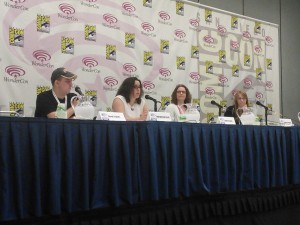
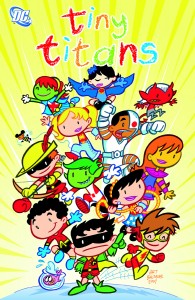
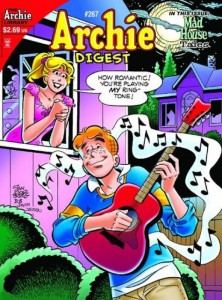




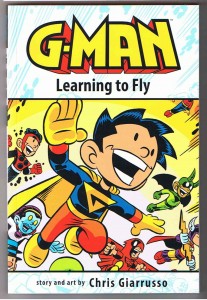

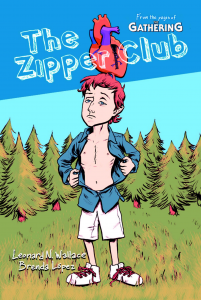

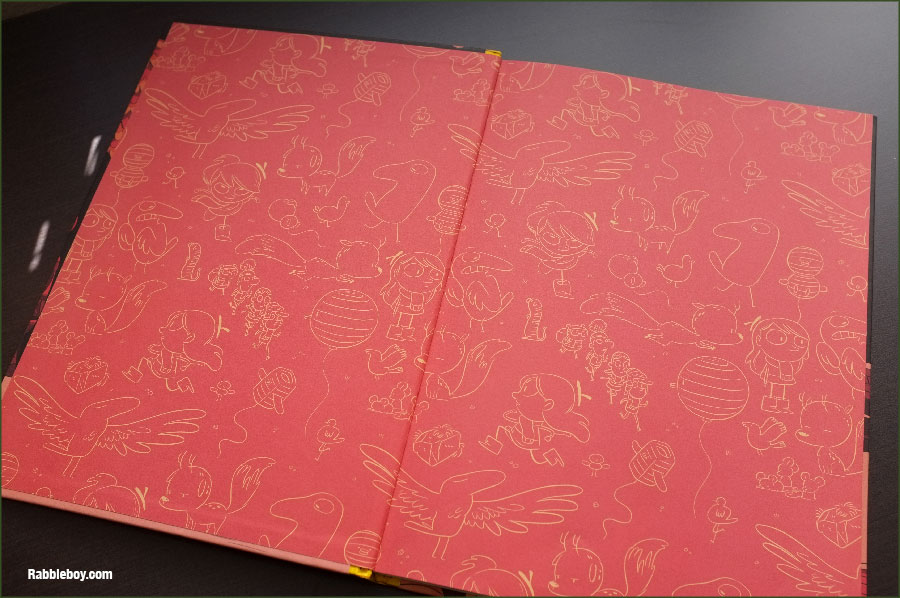


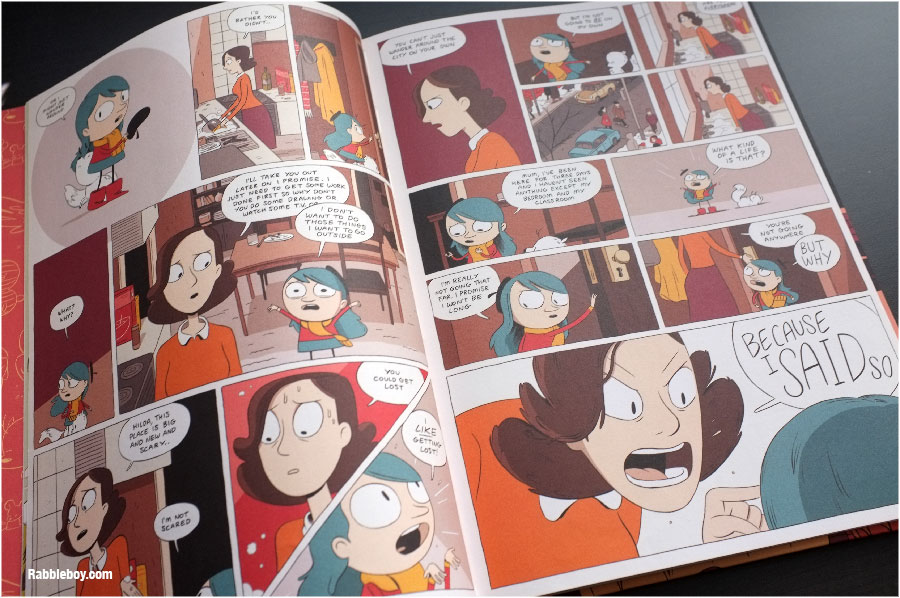
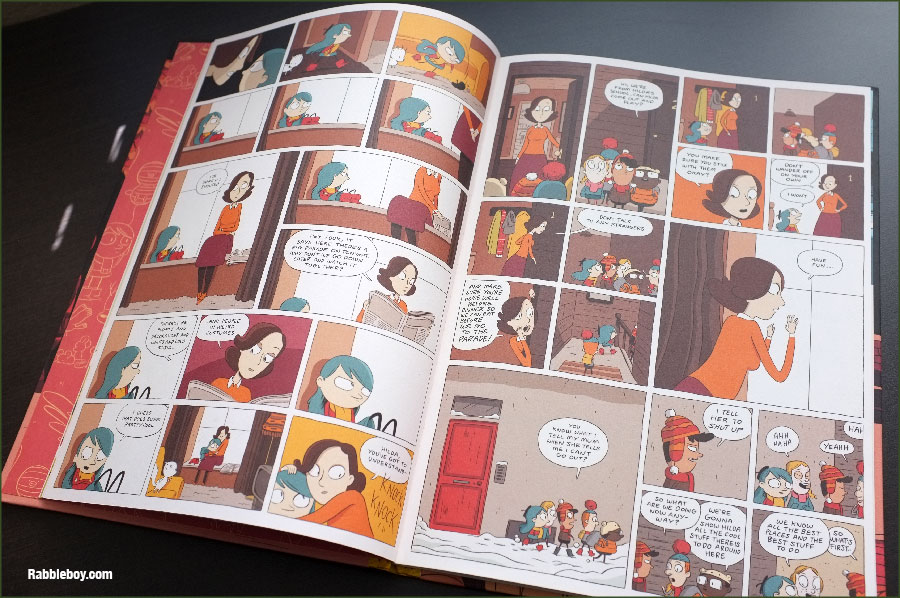

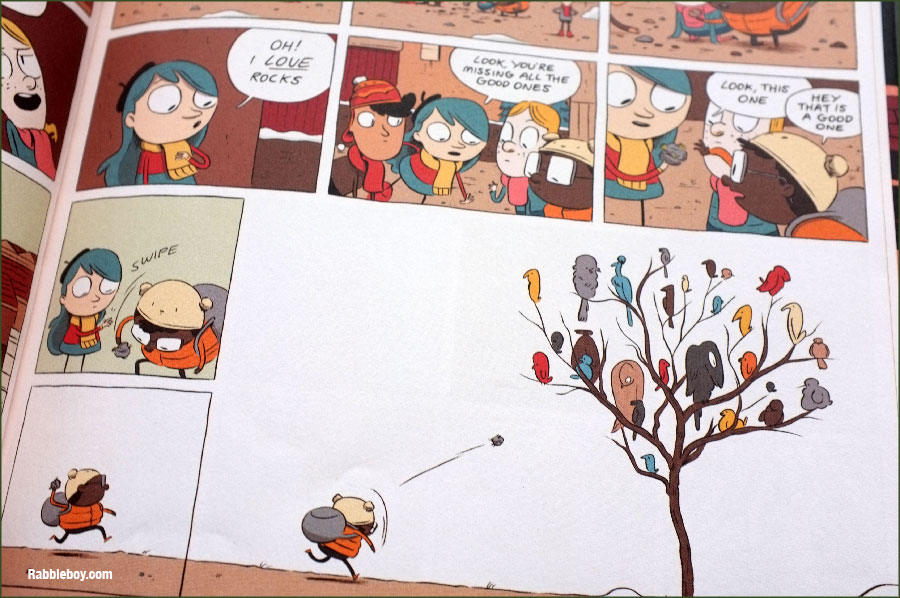
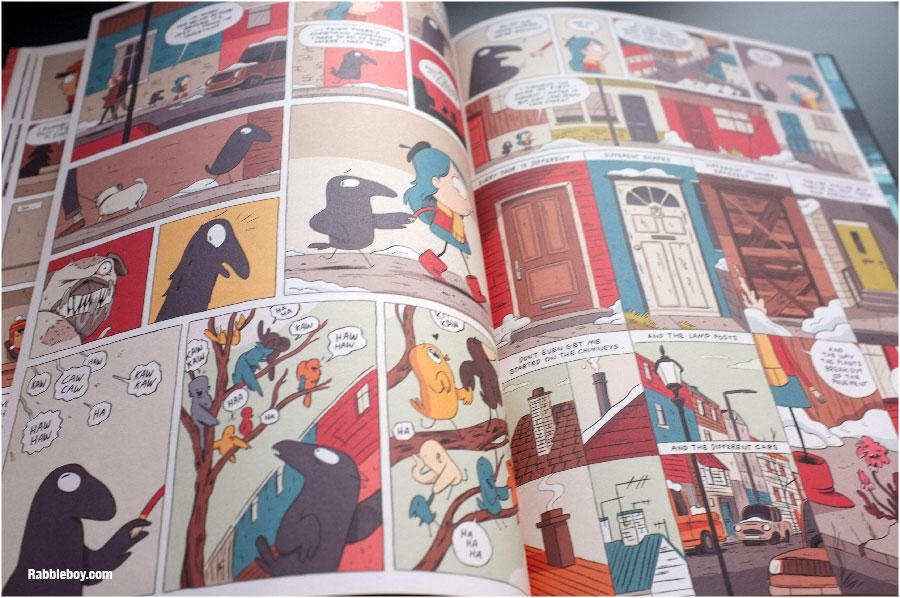
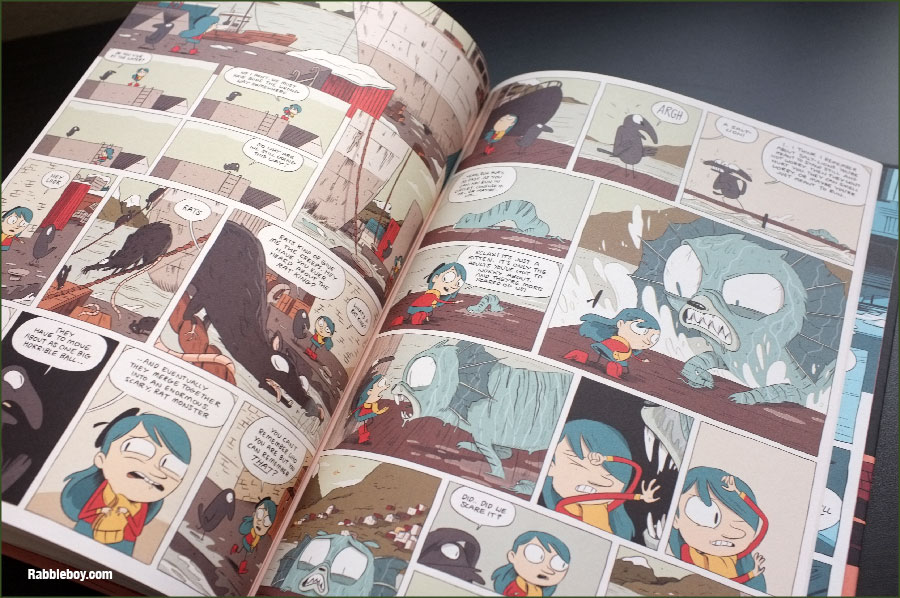
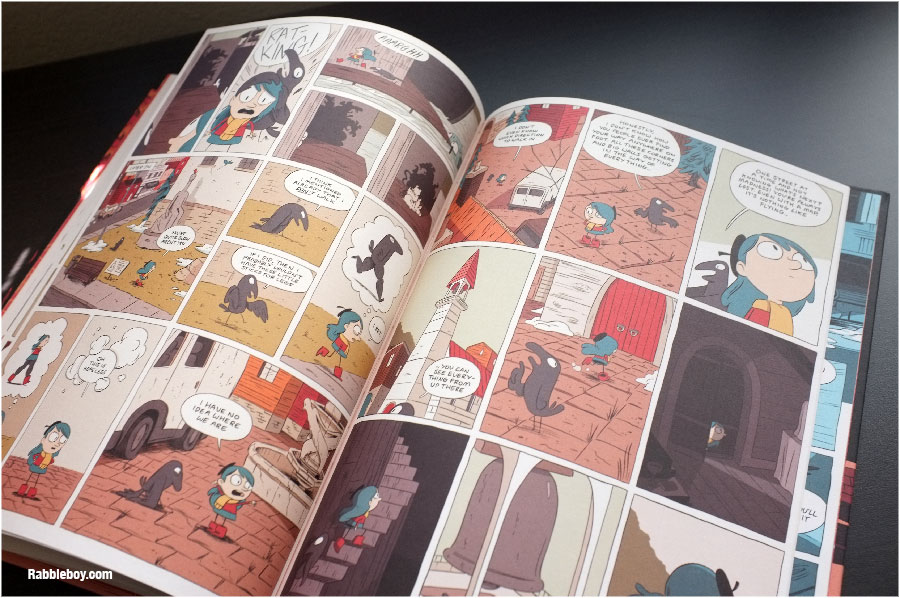
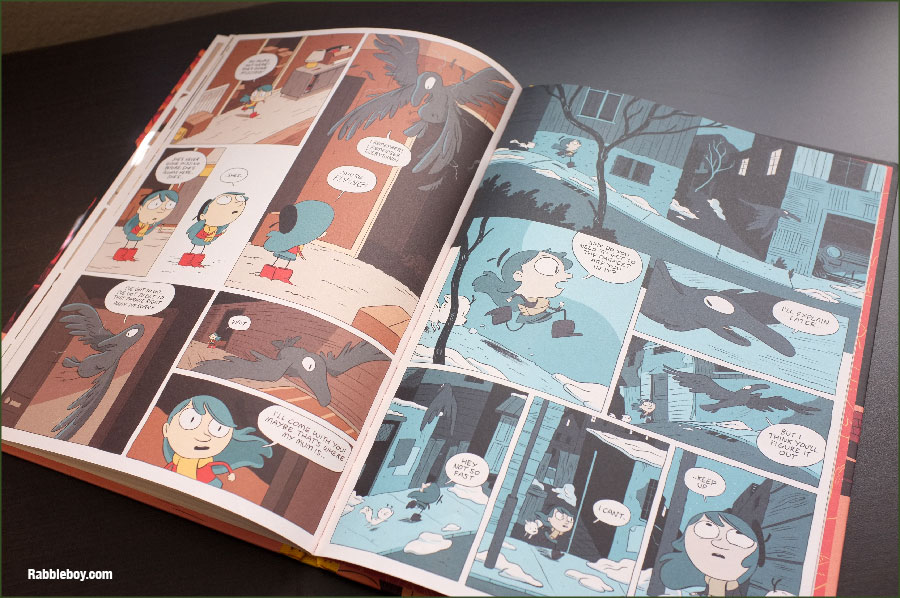

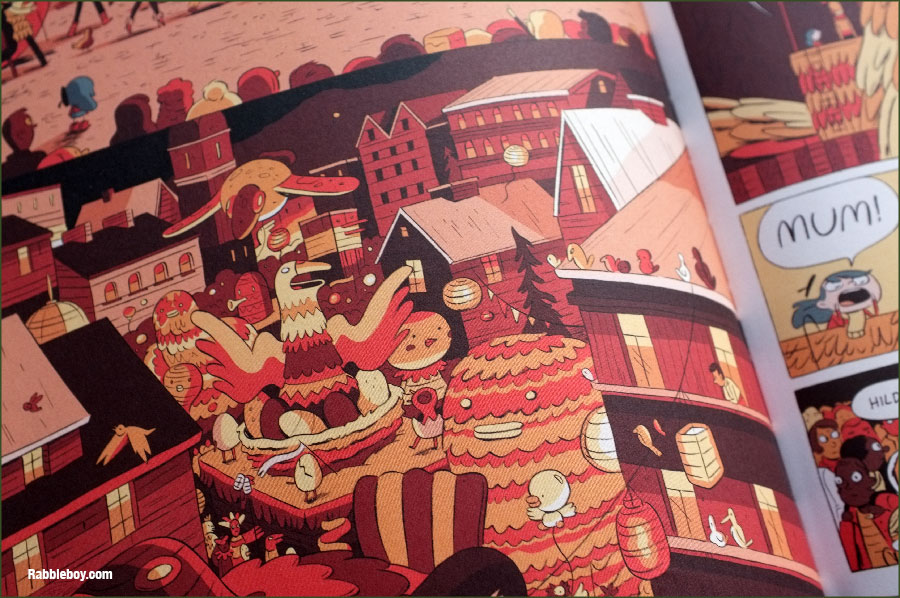
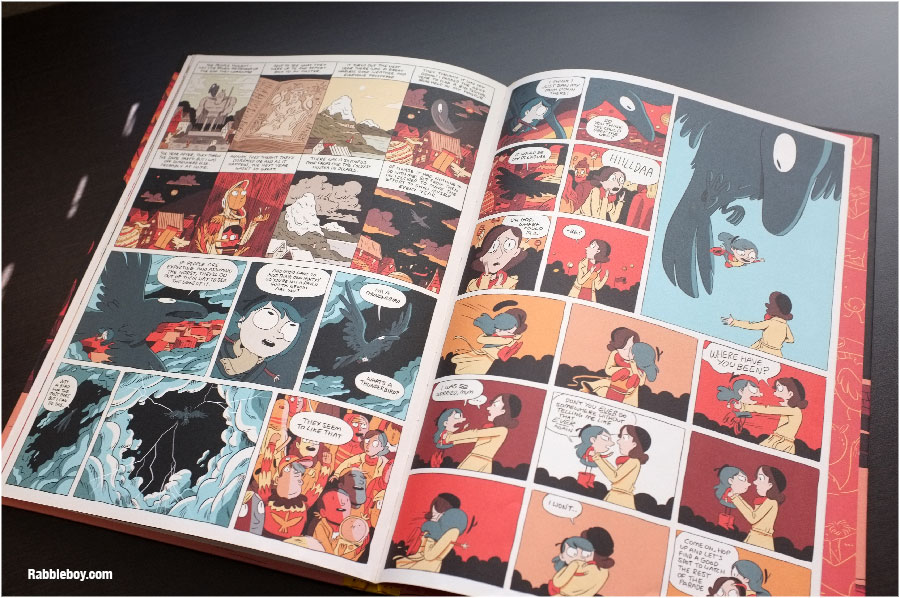
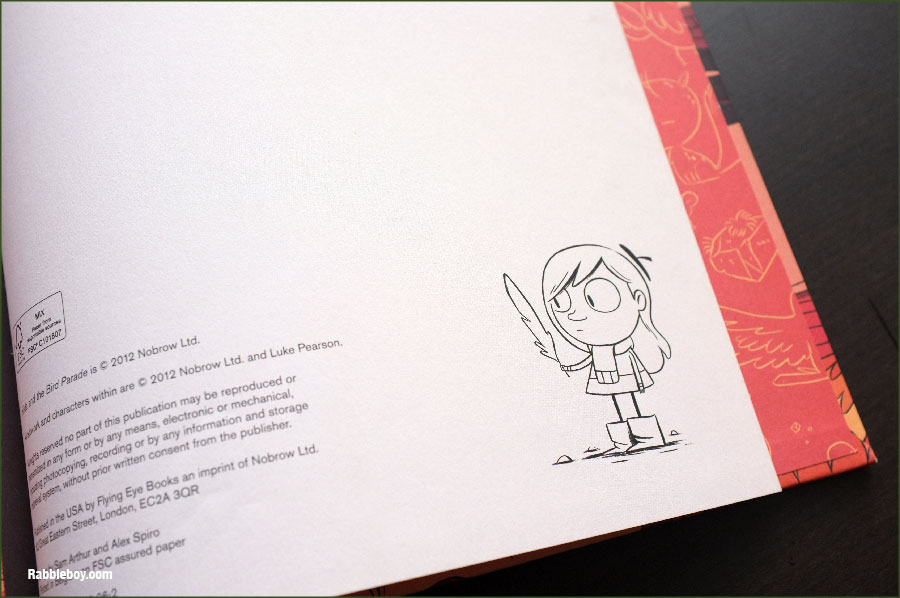
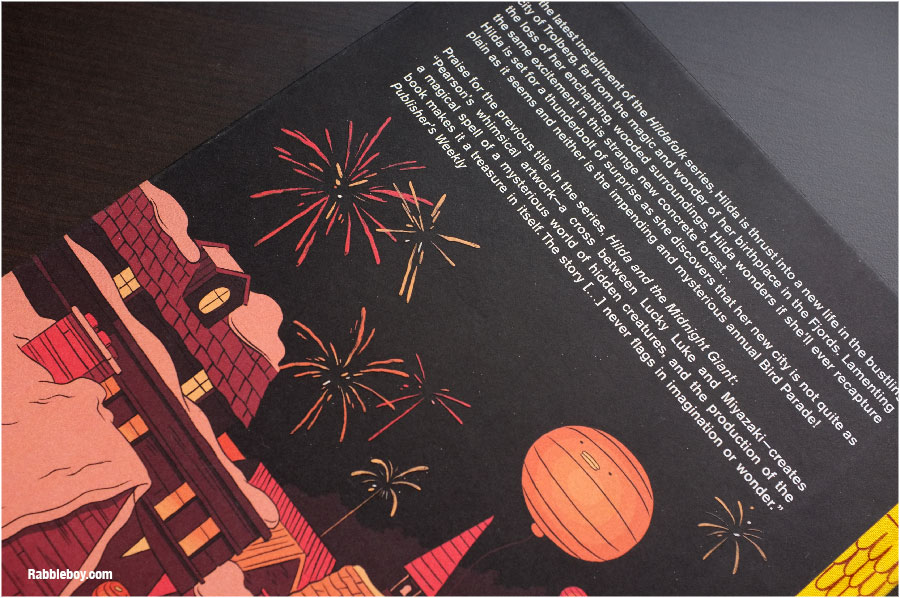




“Fun for the whole family!” generally isn’t. Especially if a teenager is involved.
Seriously? You’d read “Gotham Academy” to a four-year-old child?
(DC rates it “PR” to booksellers, “all ages” to digital customers. “Grayson”…that’s 12+ digitally. So was “Death of the Family”. “Scooby-Doo Team-Up is “AR” for booksellers.)
That’s the problem with “all ages”… the precise definition is meaningless… no book is “all ages”… some demographics (newborns, curmudgeons) won’t enjoy the book.
It’s why advertisers want to know demographics for a television show. Marketing is more precise.
It’s why DC had so many different imprints over the years… Paradox, Piranha, Vertigo, Minx, Matrix/Helix, Johnny DC, DC Nation, CMX, Humanoids… different audiences, different strategies.
There are different levels of reading skills. There are different levels of interest. There are different levels of what a person should be exposed to at a certain age. I hope that publishers consider “reading level” when creating comics. I got hooked on Spidey Super Stories, an easy-to-read comic book. Is the vocabulary vetted? Both DC and Marvel repackage their comics to schools (Stone Arch, Abdo). They license their property to other publishers.
Sure, some stories can appeal to kids, even if they never were originally meant for that audience. (Bone, for example.) Then, you can market an edition to kids, and another to adults. (Like Harry Potter or Golden Compass.) Some might have different levels of cognition. (Rocky & Bullwinkle, The Simpsons)
Comics are for everyone, but not everyone should be reading the same comic.
The DC Super Hero chapter books I write for Capstone Books are geared to a specific reading level. They might be considered “All Ages” since the people reading at that level could be adults or children, or in between. I just try to write an exciting adventure story.
Torsten as usual, makes excellent observations.